Peru Great Divide
Published:
The concept behind bikepacking the Peru Great Divide route originated on a much shorter backpacking trip around the San Francisco Bay. I was biking with Sam Abernathy, who I had met through the Stanford triathlon team a couple weeks prior, Margret Antonio, and Brian Ly. On that trip, we had a somewhat ridiculous first day that included 94 miles, 10k of climbing, and a very silly hike-a-bike at 10 pm after attempting a shortcut to our planned campsite Mt. Tam. That trip was my first exposure to bikepacking, and I was somewhat ill prepared with only a spare jacket and tarp in a handle bar bag, a little food in a frame bag, and my sleeping back strapped haphazardly with NRS river strap to rack on my gravel bike. At some point on the trip Sam mentioned that he was interested in bikepacking the Peru Great Divide – a route composed of 1000 miles of dirt riding in the Andes of Peru – in the spring. I was sold.
Once I got hired for a summer internship in Seattle and I felt that my life had sufficient direction in the professional realm I texted Sam : “Peru invite still open? Is the trip happening?”. I happily let Stanford housing know I would be moving out of the fraternity I resided in and started figuring out my gear setup. I initially planned to take my Specialized Sequoia which I already owned and was a solid reliable alloy gravel bike. However, the Sequoia maxed out at about 45mm tires which was on the edge of what I wanted for a longer rough gravel bikepacking trip. So I bought a used Specialized Epic hardtail and an Old Man Mountain rack that mounted onto the thru axle and thus became the only member of our motley crew with suspension.
We flew out on May 2nd from SFO and made it to Lima that evening. By May 4th the whole group was in Huaraz, our acclimation and start point, after a reasonably pleasant 10 hour bus ride with Cruz Del Sur. In Huaraz we unpacked our bikes from their bags and found them in mostly good condition. Brian found that one of his wheels was slightly out of true, and was able to pay a local bike shop 20 soles (or about $6) to have it trued for him. The bike shop in Huaraz sold modern mountain bike parts, but at a markup. Maxxis DHF tires were going for 800 soles or over 200 US dollars. Anything in Peru made locally was generally 2-3x cheaper than its counterpart in the US, but anything requiring export was 2-3 times more expensive. We went on one acclimatization ride to Laguna Lacha at 15,000 feet biking from town. We were harassed by a variety of dogs on the way up but with more bark than bite and fortunately reasonably small. Over the course of the trip we perfected our interaction style with Peruvian dogs. Fearing a bite and the possibility of rabies, we initially would dismount and walk with our bikes as a barrier between ourselves and the dogs. Later in the trip, we became more casual and would typically only unclip the dog-facing foot to serve as a defensive club as we rolled by.
Laguna Lacha lies in Huascaran national park; a park ranger charged use 25 soles a person at the park entrance and another man further down the road who’s affiliation with the park was less clear told us we would owe him an additional 5 soles if we were not back at the gate by 3 pm. By mid afternoon we made it up to Laguna Lacca and celebrated with a swim in the glacial lake. We made it back to the gate at 3:05 and paid the additional five soles for our tardiness. Everyone’s legs and lungs worked reasonably well and so the subsequent day we shipped our empty bike bags to Abancay with the Cruz Del Sur “encomiendas” service where they would be held for somewhere between 25-30 days. Then on May 8th, we started pedaling. The gravel route initially imagined by Harriet and Neil Pike goes from Conocha to about 40 miles short of Abancay. The ride from Huaraz to Conococha is 40 miles or so on a reasonably busy paved road. We decided to make a small addition through Huascaran National Park and by Pastori Glacier. Our first night we camped on the Park boundaries at about 13,500. There were three dogs running around the park entrance next to our camp, we mostly discouraged their company by aggressive “NO” when they got too close and occasional feigned kicks. However, one reasonably small and very cute dog failed to take the hint, and we eventually gave up trying to scare him away and began referring to him as “Noah” derived from our original shouts of “No”.
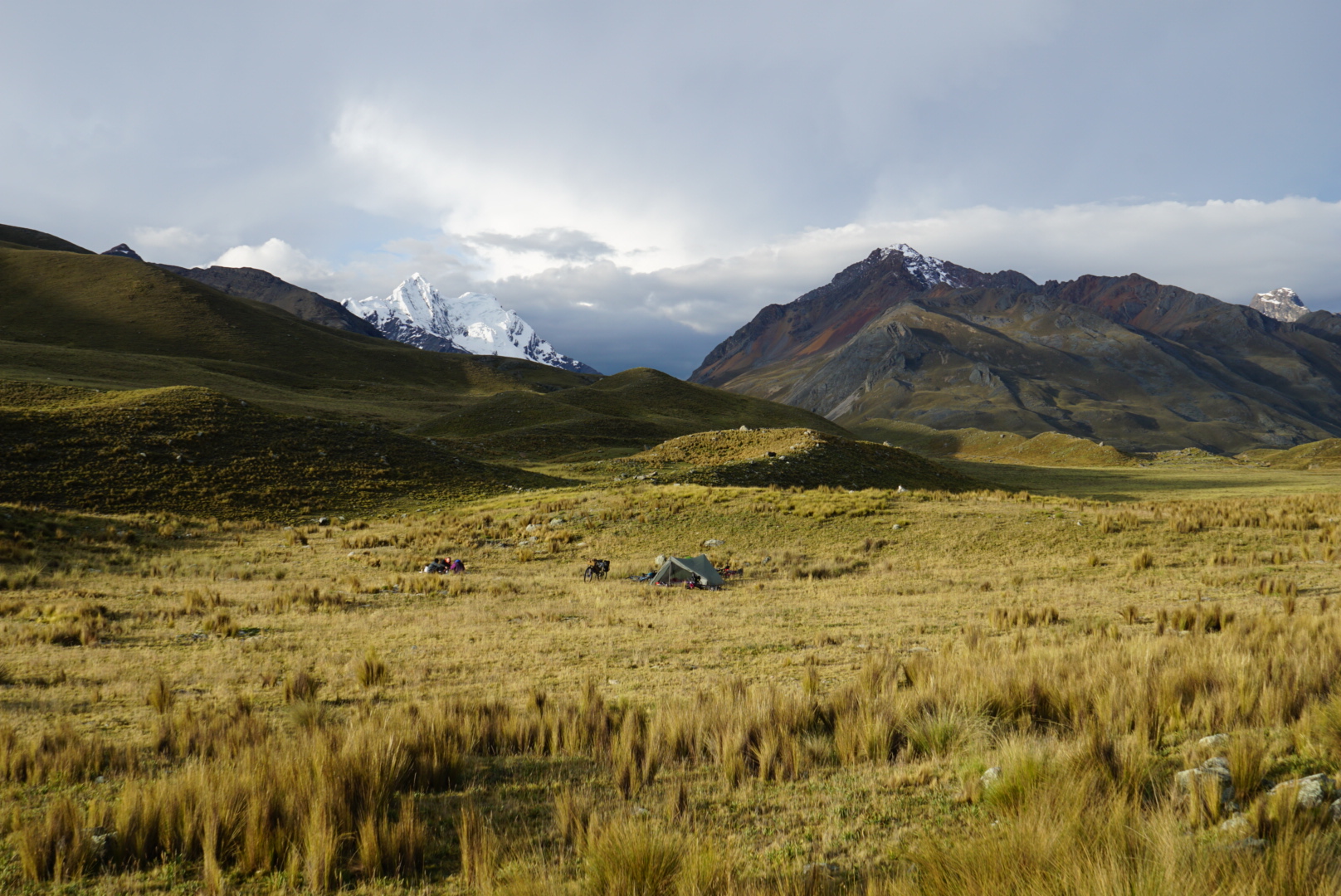 Our first night camp on the Peru Great Divide route. We camped on the outskirts of Huscaran national park.
Our first night camp on the Peru Great Divide route. We camped on the outskirts of Huscaran national park.
The next day, after shaking the frost off our tents, we climbed up to about 15k and then rolled up and down at that altitude for the rest of the day. Noah accompanied us for the first 30 miles. By late afternoon, Sam’s stomach was giving him significant discomfort and it started to rain. We eventually made it to the final high point and joined a paved road for the descent in the rain down to Patapaqui. In Papaqui, we had our first experience in finding logingings in small towns. The model was pretty consistent town to town. We would ask everyone and go in circles for a while and generally eventually something. In this case, we found a single room with four beds and, more importantly, an adjoining toilet. We also got our first taste of a classic small town Peruvian fair: rice, fried potatoes, and fried eggs. Brian was able to buy more oreos, which as vegan, were a significant source of his calories if not nutrition for the entire trip.
 Descending towards the town of Patapaqui at the end of the second day.
Descending towards the town of Patapaqui at the end of the second day.
 Patapaqui the next morning
Patapaqui the next morning
As with all towns in Peru, people rise early and there is generally a fair bit of commotion related to honking cars and loud animals. The next morning at 6, I walked to the small restaurant next to the room we were staying and ate a breakfast of soup and eggs as passing cars honked and animals made a variety of noises. Everyone was feeling decent and so we started pedal with an easy paved descent and the first ten miles passed quickly. From there it was a 3k climb to Conocha, the official start of the route. We made it to Conocha a little afternoon and had lunch there – more rice, potatoes, and eggs.
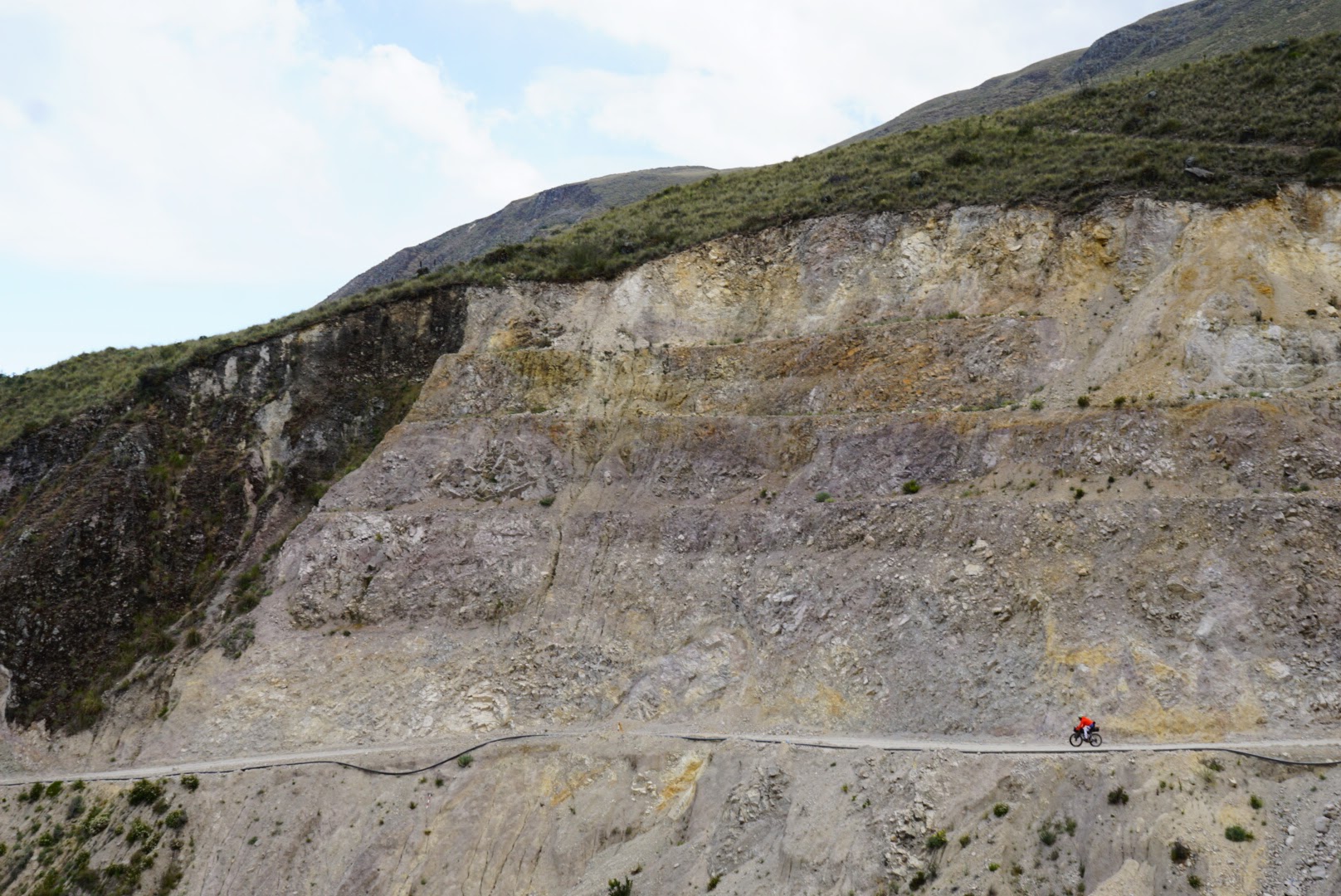
The rest of the day was rolling dirt and the beginning of a descent. We initially found a place to camp above the dirt road we were riding on, but a herd of bulls walked down the hill towards us and made a convincing argument for us to move elsewhere. We eventually found a spot near a concrete tub of water, presumably used for irrigation. As we were putting up tents we became aware of a Peruvian mounted on a horse above our camp. We asked him if the spot was an okay place to camp. He seemed perplexed but answered in the affirmative.
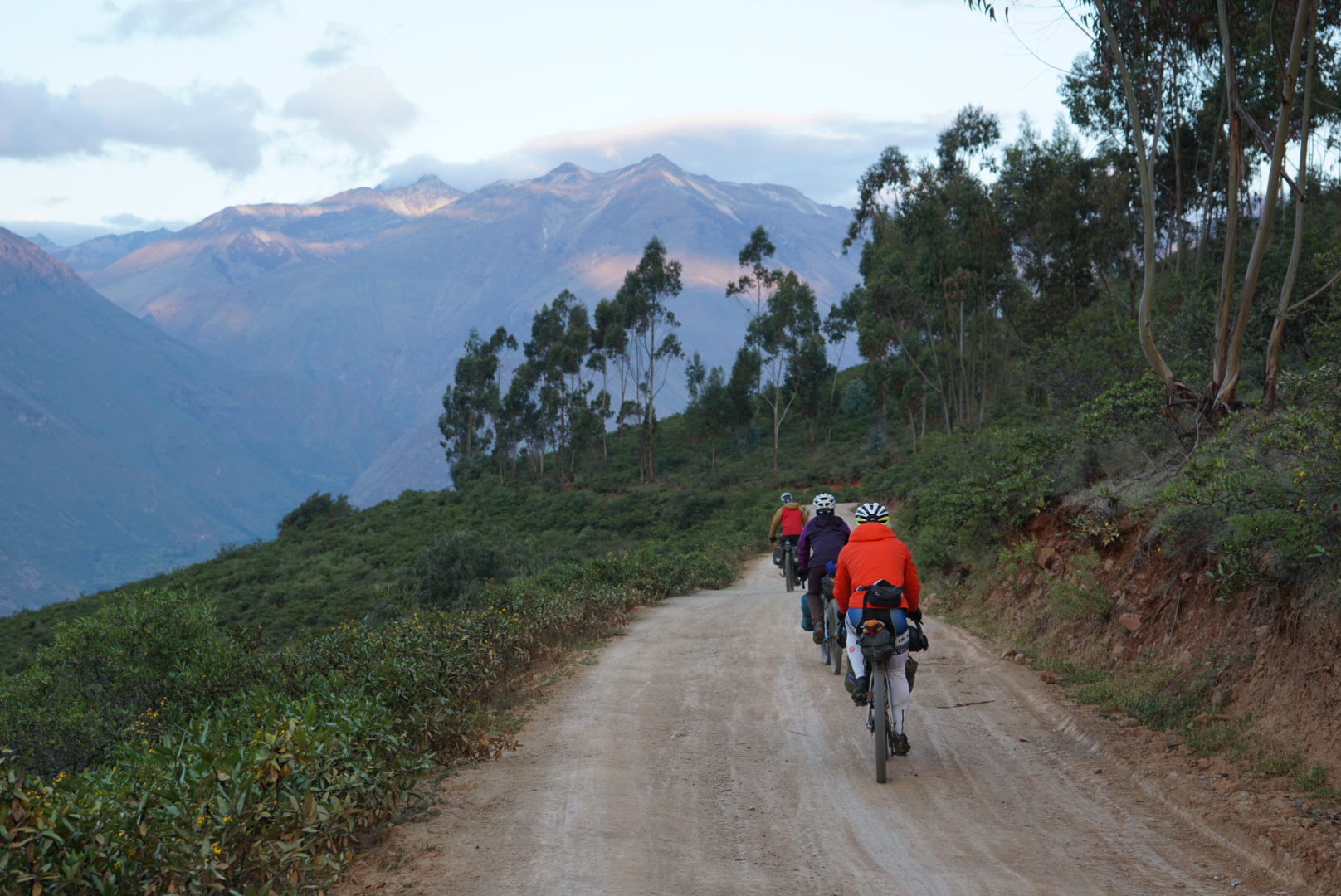
The next day we got an early start and were biking before 7am. We had two roughly 2k climbs before getting to our biggest descent of the trip, a roughly 8k foot descent down to 4k which would be our low point for the trip. Our previous days had been high elevation with plenty of creeks, grass, and trees when we were below the treeline.
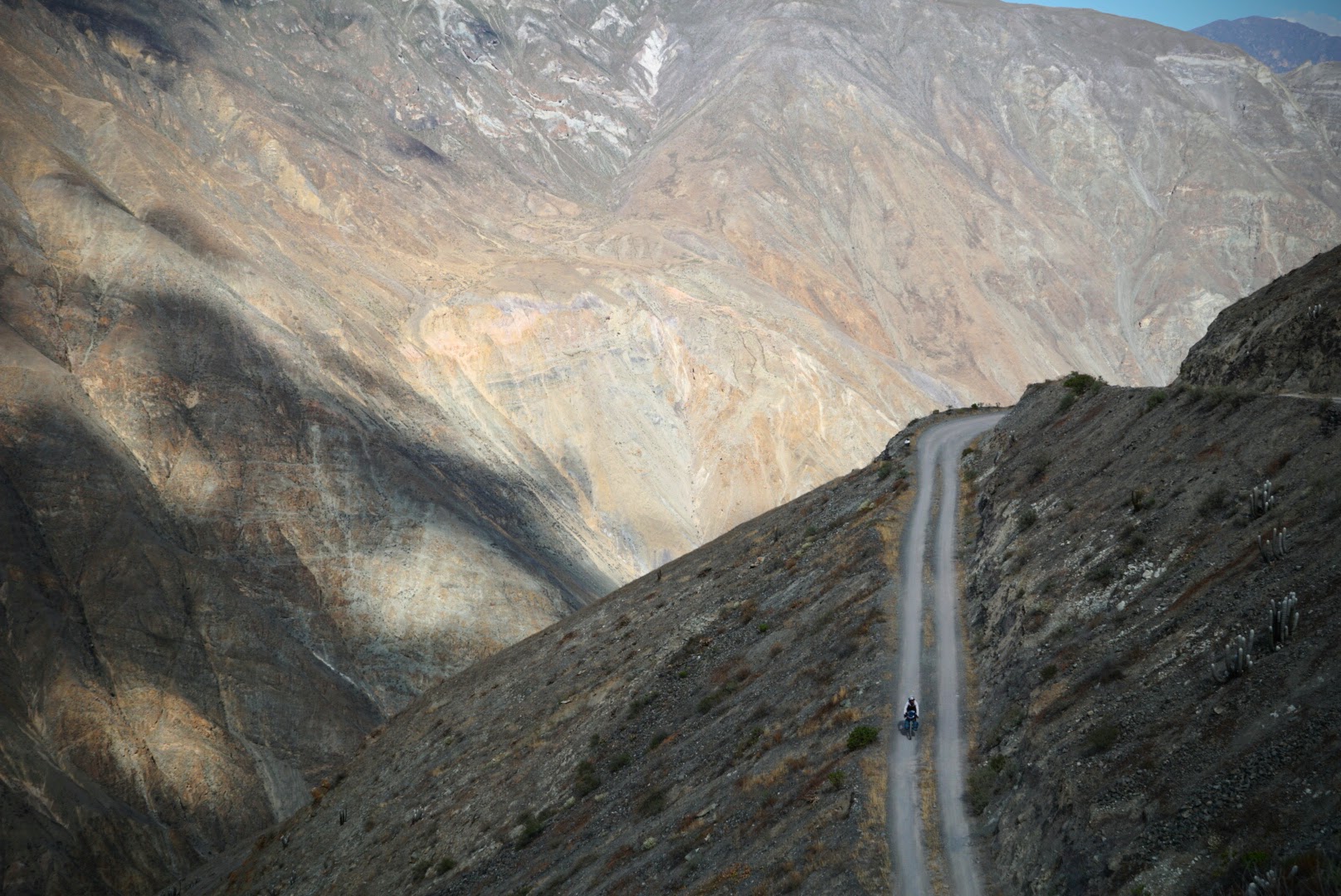 Beginning our 8,000 descent down Cañon on the 4th day.
Beginning our 8,000 descent down Cañon on the 4th day.
However, as we started dropping down into the canyon the grass turned into dried out brown stalks and the trees turned into tall cacti. As we switchbacked our way down the only indication of human presence was the double track road and a bridge in a state of disrepair across the river far below. With 3000 feet of descending to go we stopped for a late afternoon lunch consisting avocados, crackers, old and slightly leaky cheese, oreos, and unsalted nuts.
 One of the few photos I took of my own bike. I was the only one with front suspension on the trip.
One of the few photos I took of my own bike. I was the only one with front suspension on the trip.
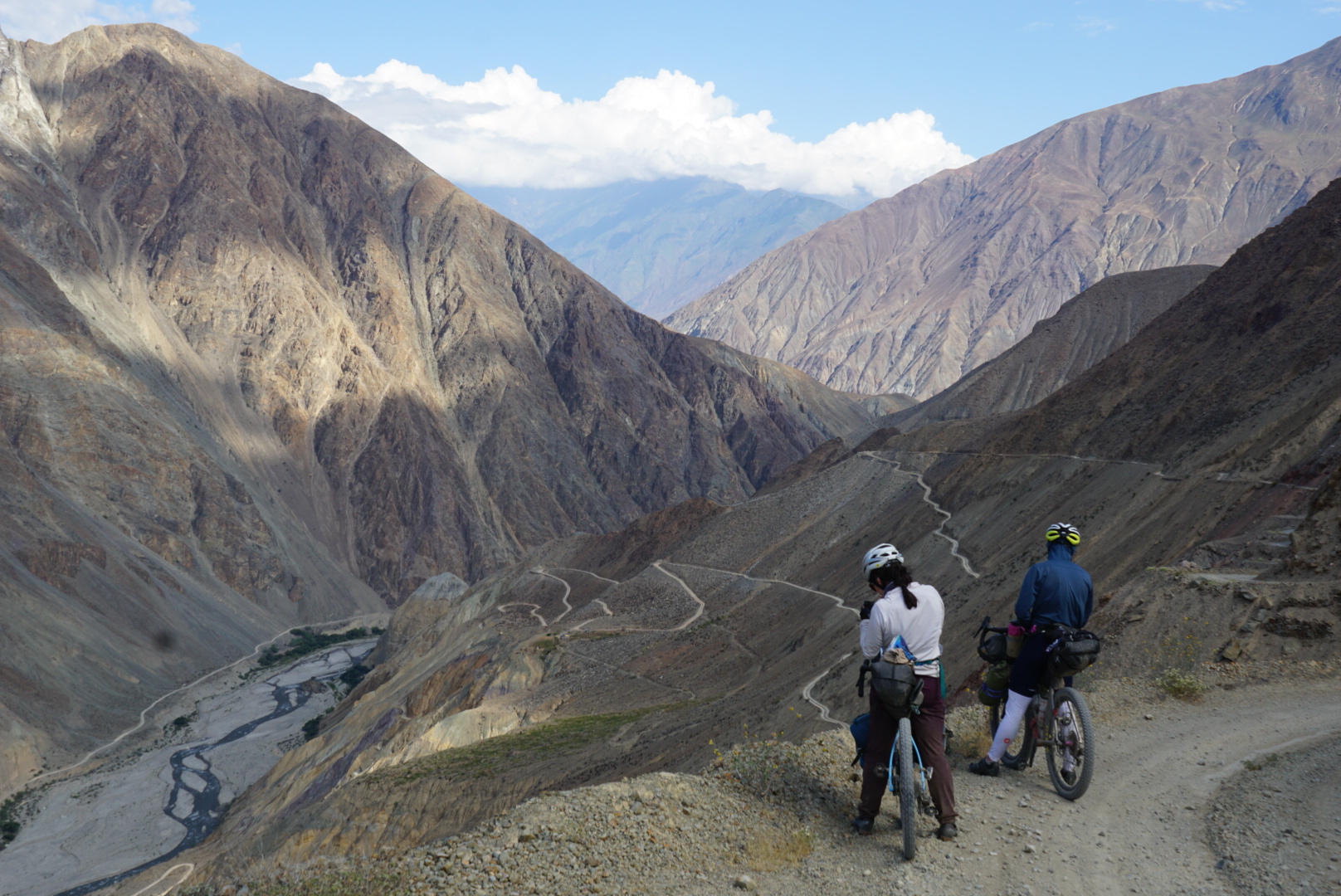 Inspecting the final switch backs down to the base of the Canyon.
Inspecting the final switch backs down to the base of the Canyon.
With the sun getting lower in the sky we did not dally but continued our descent. Around 4pm we made it to the canyon floor and crossed the rickety bridge. We continued down the river along the side of the canyon hoping to perhaps get dinner in Canon, a small town we saw on the map that was also where we would start climbing again. A driver who had passed us said something about a restaurant in 30 minutes which further buoyed our hopes. The Peruvians have an interesting habit of describing distances in terms of times and also radically underestimating duration. Perhaps that was the case here; as we rolled into the canyon, we were greeted by the skeletons of old brick structures most without roofs and none inhabited. The picture I took of the group biking up a slight grade with the decrypted buildings around them and eroding rock in the background gives the scene a slightly apocalyptic appearance.
We pressed on and continued up the canyon until we found a flattish spot near the edge of the river where we could pitch tents. This was the first night and last night we were able to walk around in shirts and shorts and the bugs were held at bay by the wind. The river next to us descended steeply and thundered loudly with the noise reverberating off the canyon walls. We all slept somewhat fitfully.
In the morning, we mostly skipped breakfast for the sake of an early and cool start. The climb was both paved and low elevation compared to recent days and we made quick work of it. We made it to Cajatambo around 1pm and ate our first real meal of the day there consisting of chicken noodle soup, rice, fried potatoes, and some eggs for Sam. In the afternoon we wandered around the town and found a spirited local soccer game and various snacks for the next day. Our walk was cut short by a light rain and we returned to the hotel happy to have a roof, warmth, and sporadic wifi to update strava and call family. The hotel we were staying in was one of the nicest of the trip. A laundry service that cost a couple sols per kilogram washed, dried, and folded our riding clothes and the inner courtyard of the hotel hosted multiple friendly dogs and babies while an older man butchered a chicken in the corner.
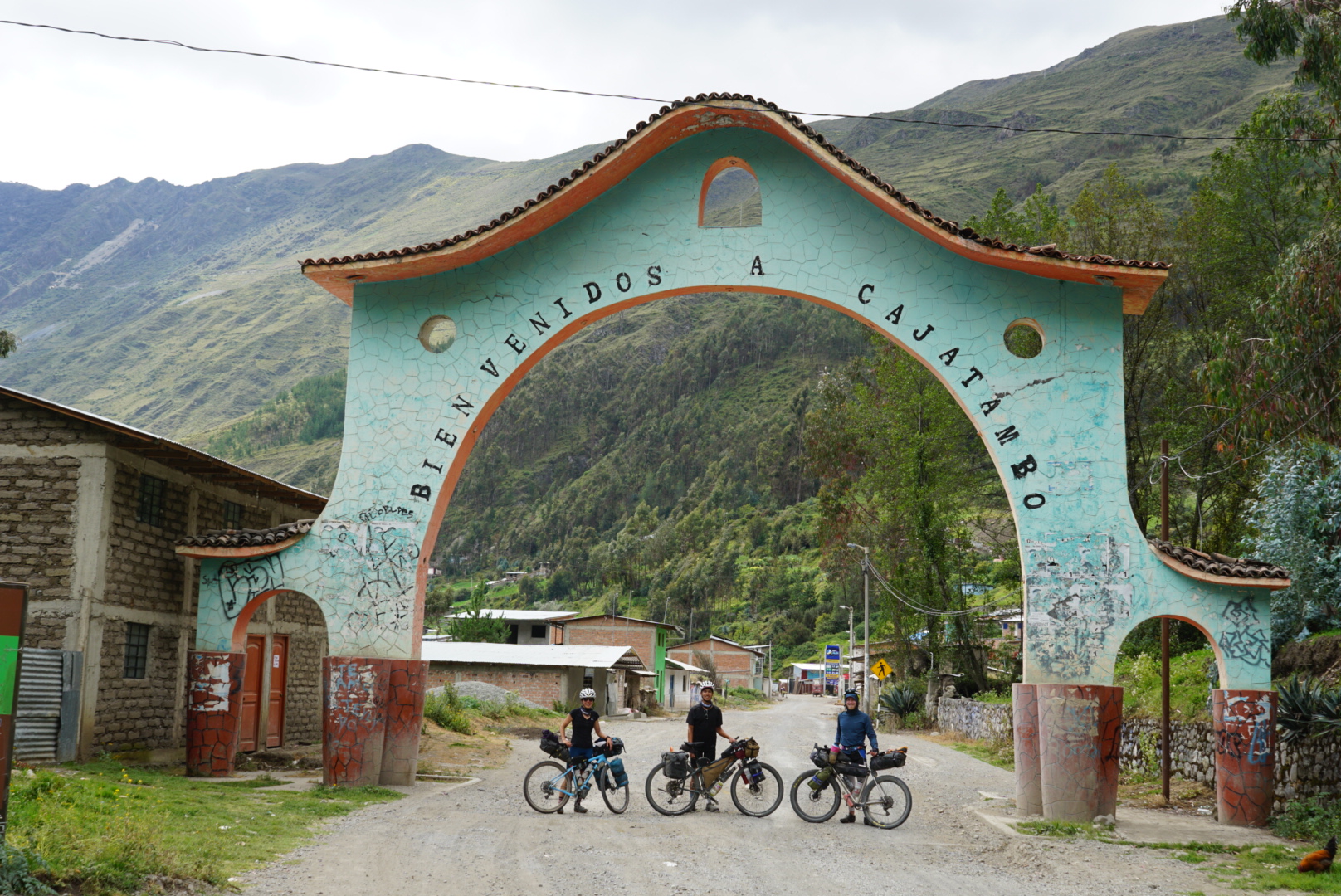
After getting breakfast at “Vicky’s” the same place we had purchased lunch, we continued on towards Oyon. Although only slightly more vertical than the ride to Cajatambo, the ride to Oyon took all day and included a couple long slow passes at close to 16000 feet.
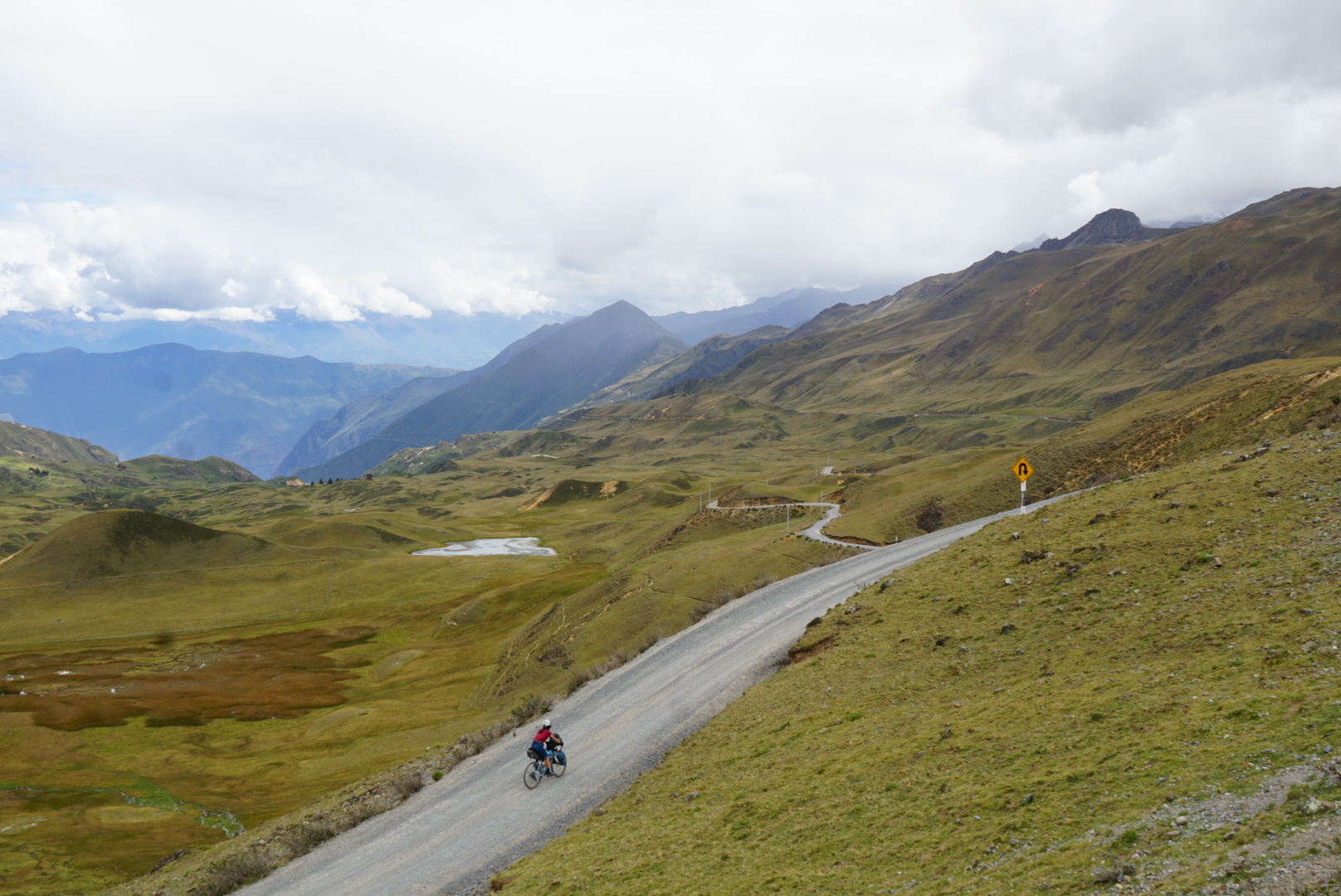
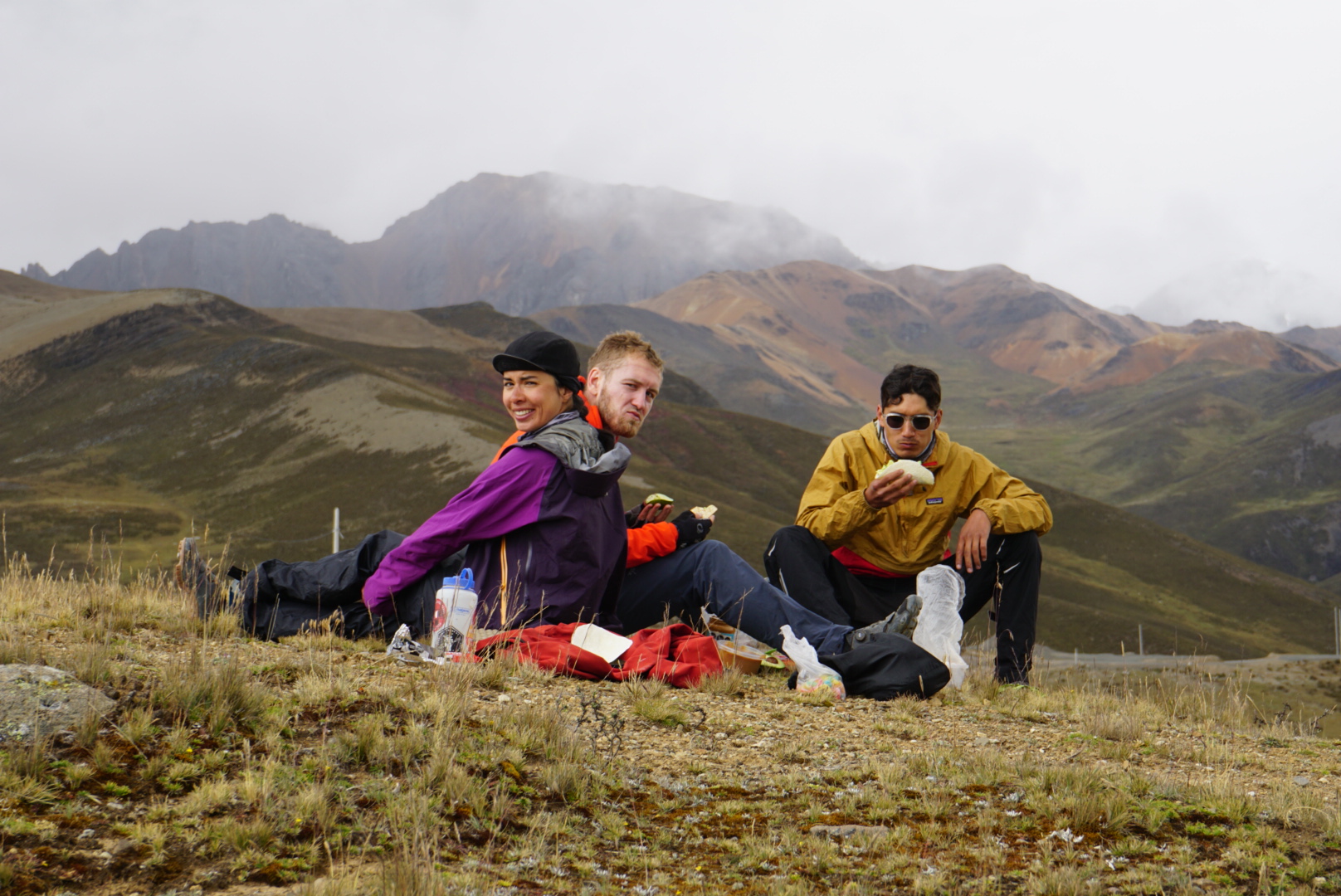 A snack break before the rain.
A snack break before the rain.
It started raining at about 2pm and we spent the rest of the day pedaling on a road that was increasingly turning to mud. Almost all the traffic we saw today was in the form of very large mining trucks and a couple guys on horseback. By the time we made it to the high point the rain had intensified into sleet. We briefly discussed changing into more clothes, but I was convinced that the precip would stop as soon as we put in a couple miles and dropped 3000 feet and so started rolling. I realized my mistake after about 20 minutes of muddy, wet, cold riding in which the precip had turned to rain but had not stopped and realized I was becoming mildly hypothermic. I stopped and did what I should have done at the top, which was to put only extra layers under my jacket and put on pants. Unfortunately once one is sufficiently wet and cold the extra layers could only do so much. Our descent became paved and we continued making rapid downward progress. I only started warming up after we had dropped nearly 5000 feet and began a 500 ft climb up to Oyon. We made it to town around 6pm and after bopping around for an hour found a place to stay and also persuaded them to let us keep our bikes in the rooms. It was about this time that Margaret began feeling ill, while Brian, Sam, and I went and ate pretty terrible chinese food in an attempt to vary our diet she began throwing up. Shortly after returning from dinner Sam also began feeling unwell. The next morning I arose as the sole person to avoid violently throwing up during the night and was awarded the role of caretaker. I tracked down oranges, salty crackers, gatorade, and water. The choice to take a rest day was obvious.
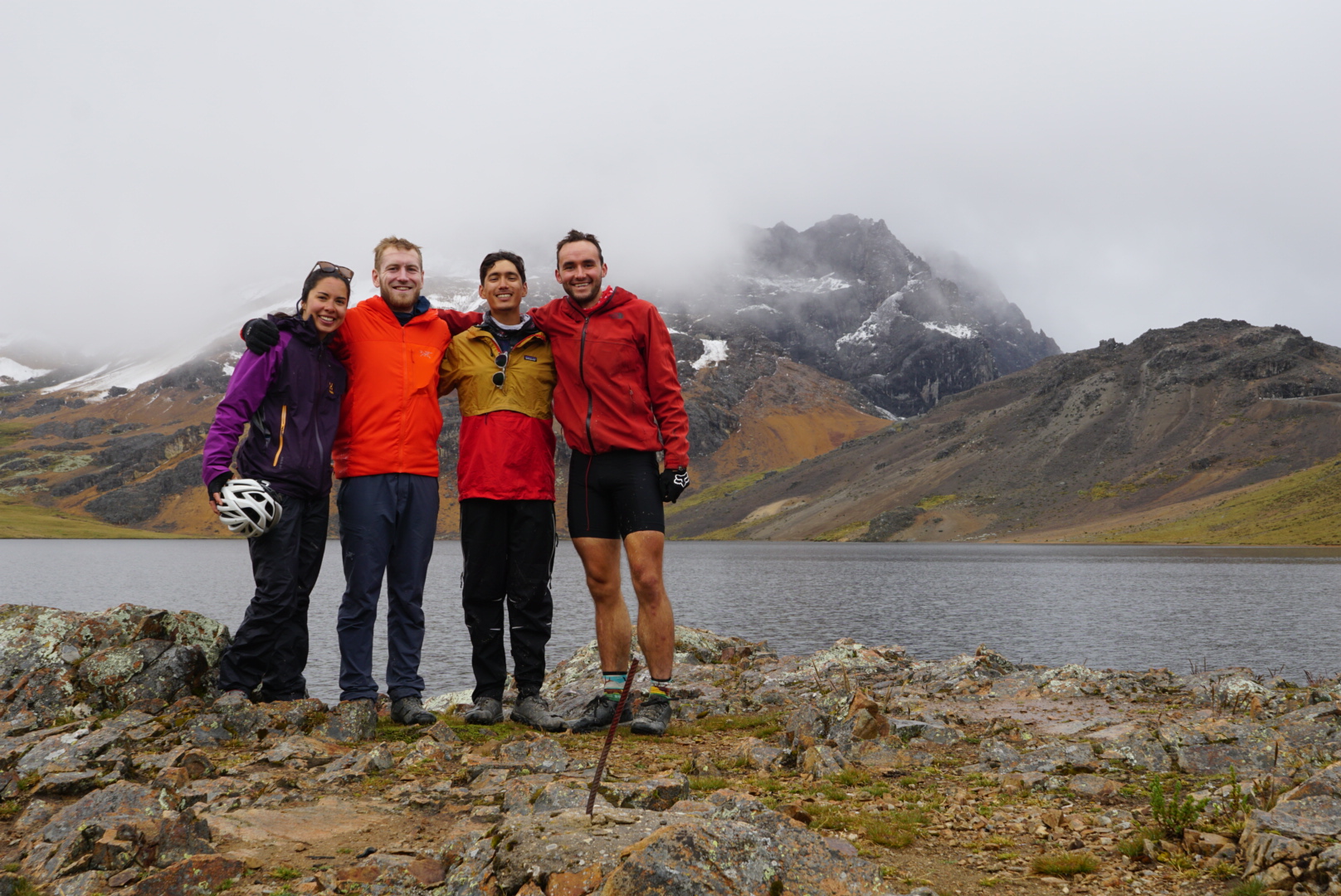 A self timer shot on our rainy ride to Oyon.
A self timer shot on our rainy ride to Oyon.
The next day we met the owner of PeruByBike and at the hotel breakfast — the rest of the group was still recovering so agreed to join him as the ‘gringo model’ for his photoshoot. We took a van up into the mountains with 11 seats, 12 people, 1 baby, 1 dog, 2 paddle boards, and 3 bikes including mine strapped to the roof in what appeared a haphazard fashion but what I was assured was a well tested setup. Upon reaching the starting local everyone shared some coca leaves and Oyon distilled whiskey from an IncaCola bottle and the three of us on bikes started off while the van carrying the remaining people trailed behind. We eventually made it to our end destination, a nice lake and village where the paddle boards were pulled out and everyone seemed to be having a jolly time in the lake. At this point I was ready to head back to the hotel but having trapped myself with the only reasonable means of conveyance being the van I had come in I waited on the rest of the group. As it turned out I was the only one in a rush and we did not leave till 630 after the sun had set and the moon came out. It somehow took us 3.5 hours to drive back to Oyon. Given that we were only 50km away or so this time quantity is a bit of a mystery to me but it was certainly supported by the 20 minutes we were stuck behind a Peruvian cow heart whose owner attempted to get the cows to move to one side of the road or the other but with limited success and also the 20 minutes our driver spent trying to bargain with a closed tienda to sell him petrol.
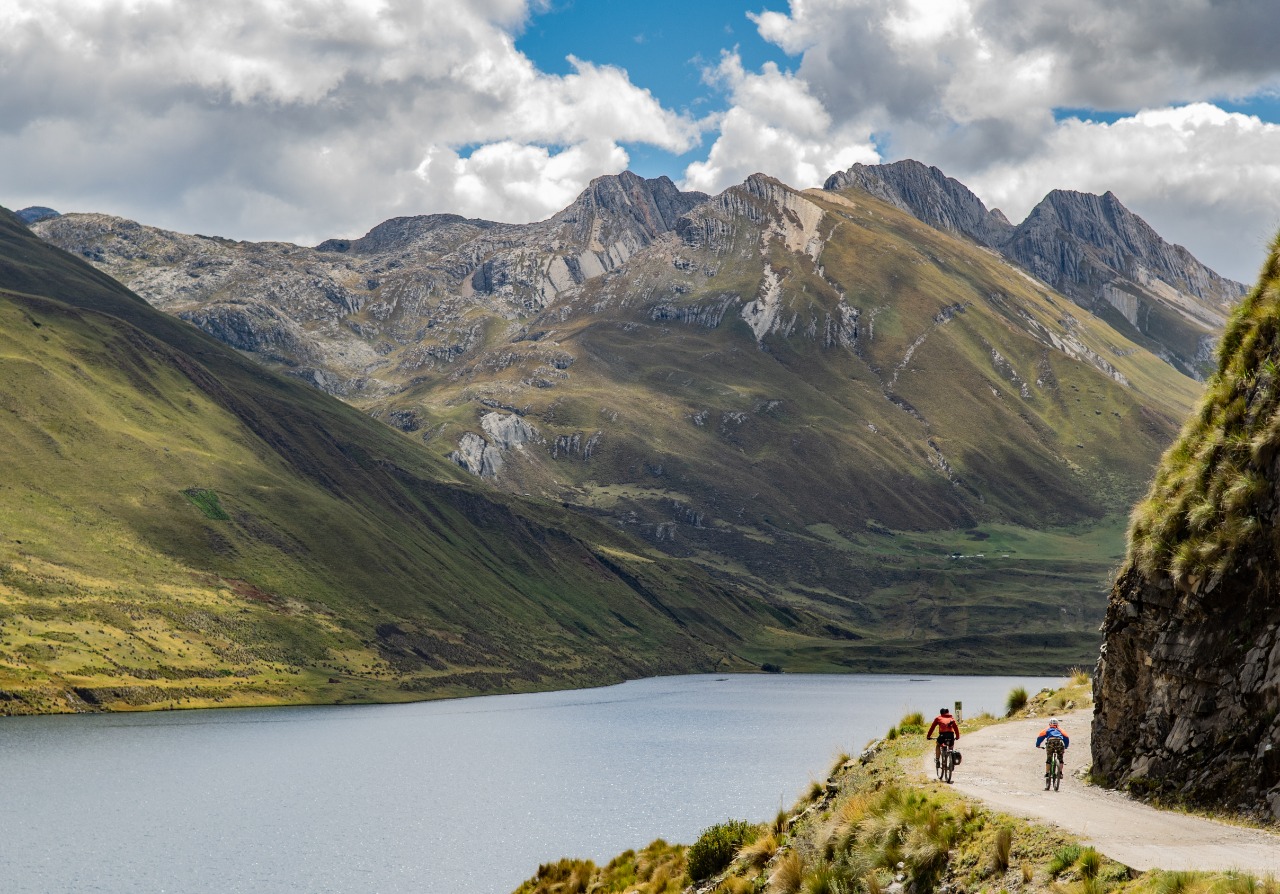 A photo taken by PeruByBike on my solo adventure.
A photo taken by PeruByBike on my solo adventure.
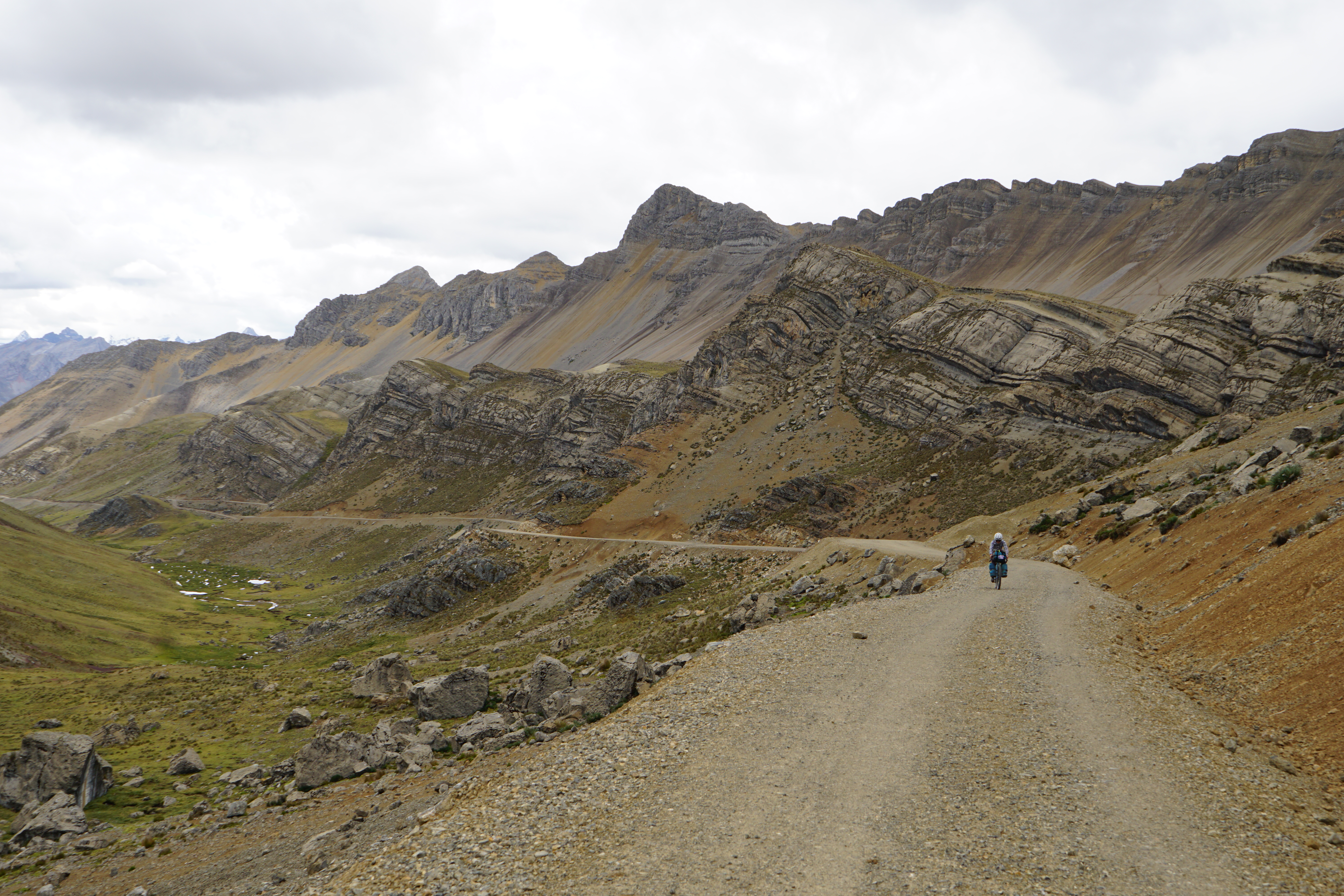 On our 7th day of riding. Powered by Oyon bakery bread rolls purchased 5 for 1 sol.
On our 7th day of riding. Powered by Oyon bakery bread rolls purchased 5 for 1 sol.
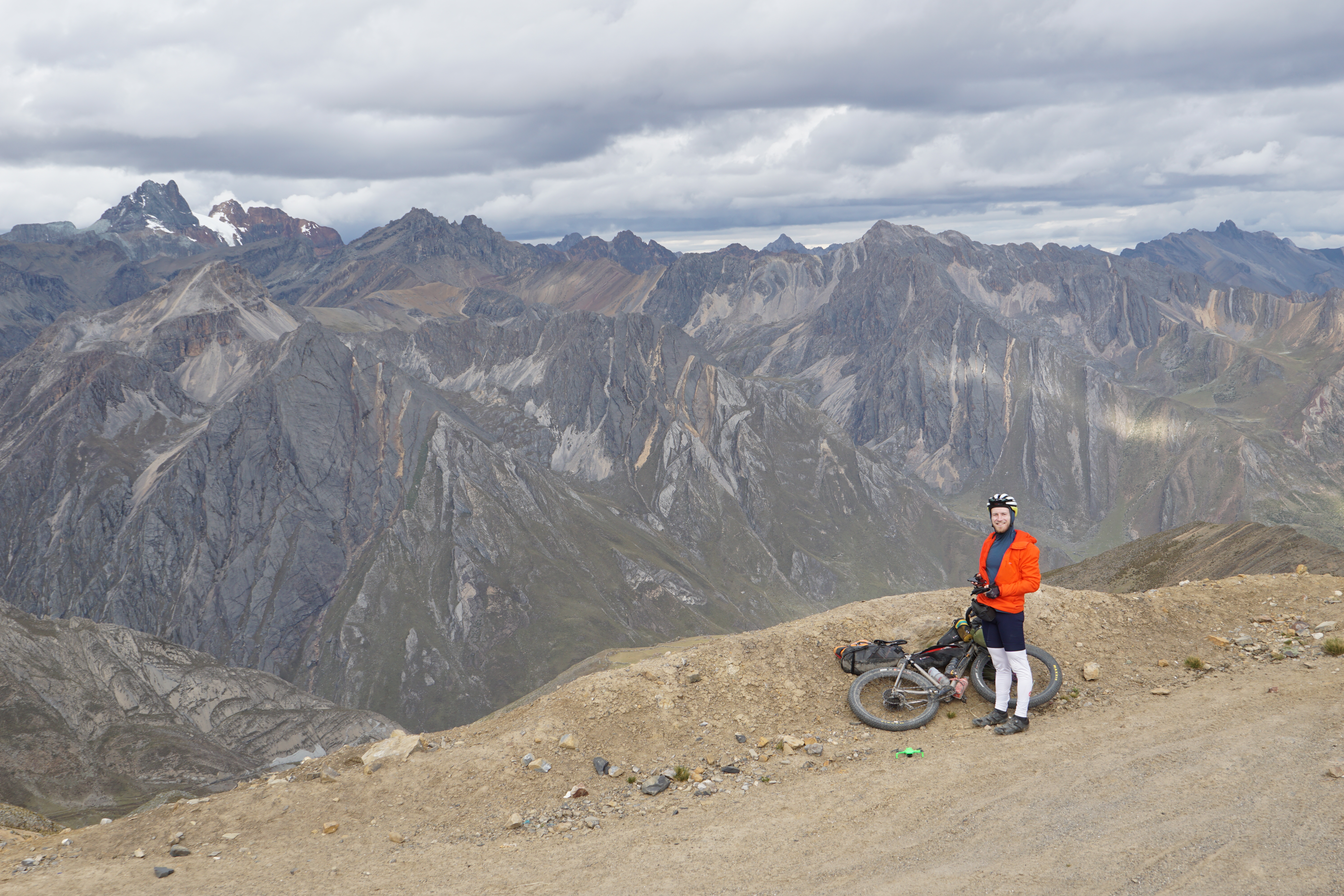 Sam posing for the camera at our high point for the day.
Sam posing for the camera at our high point for the day.
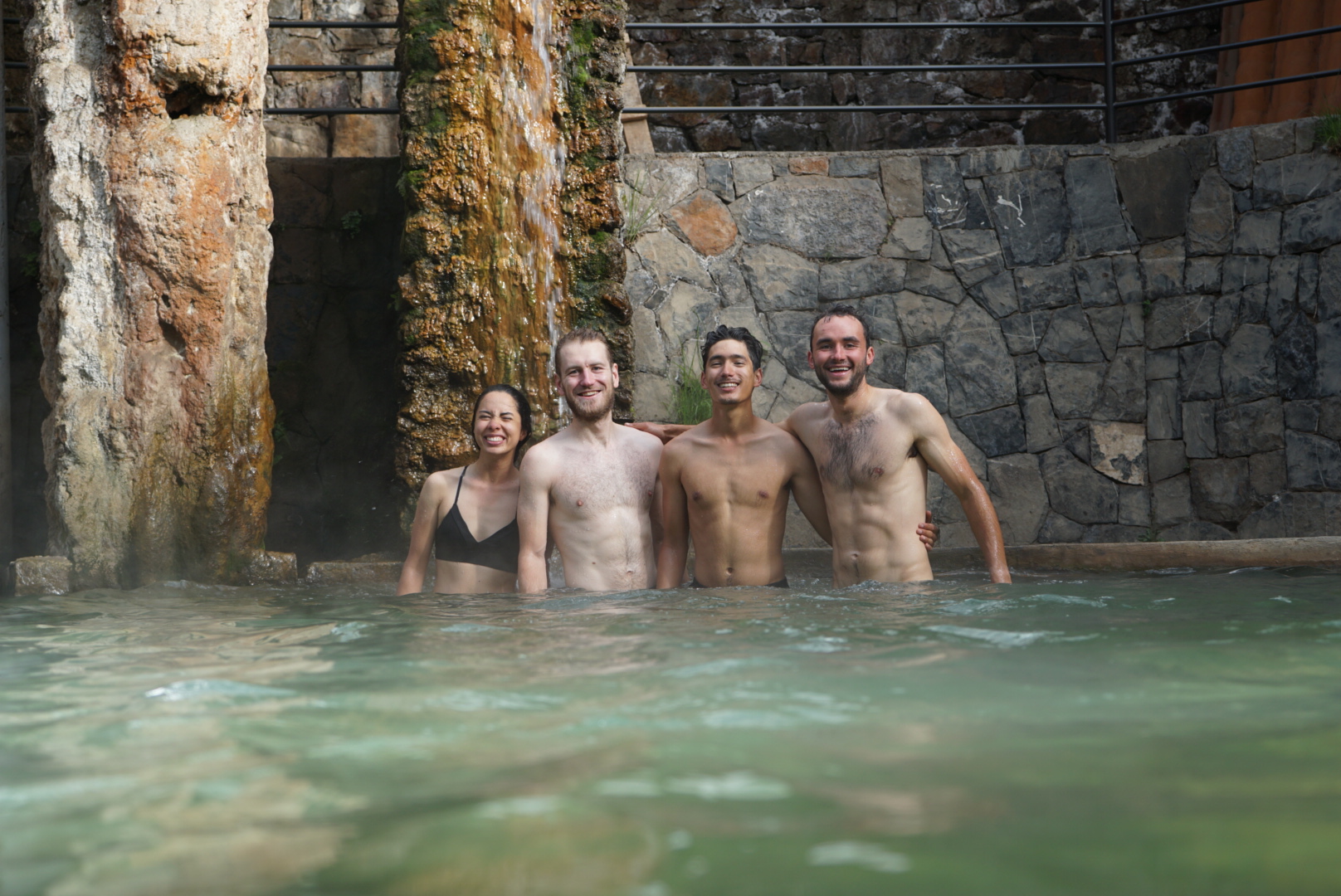
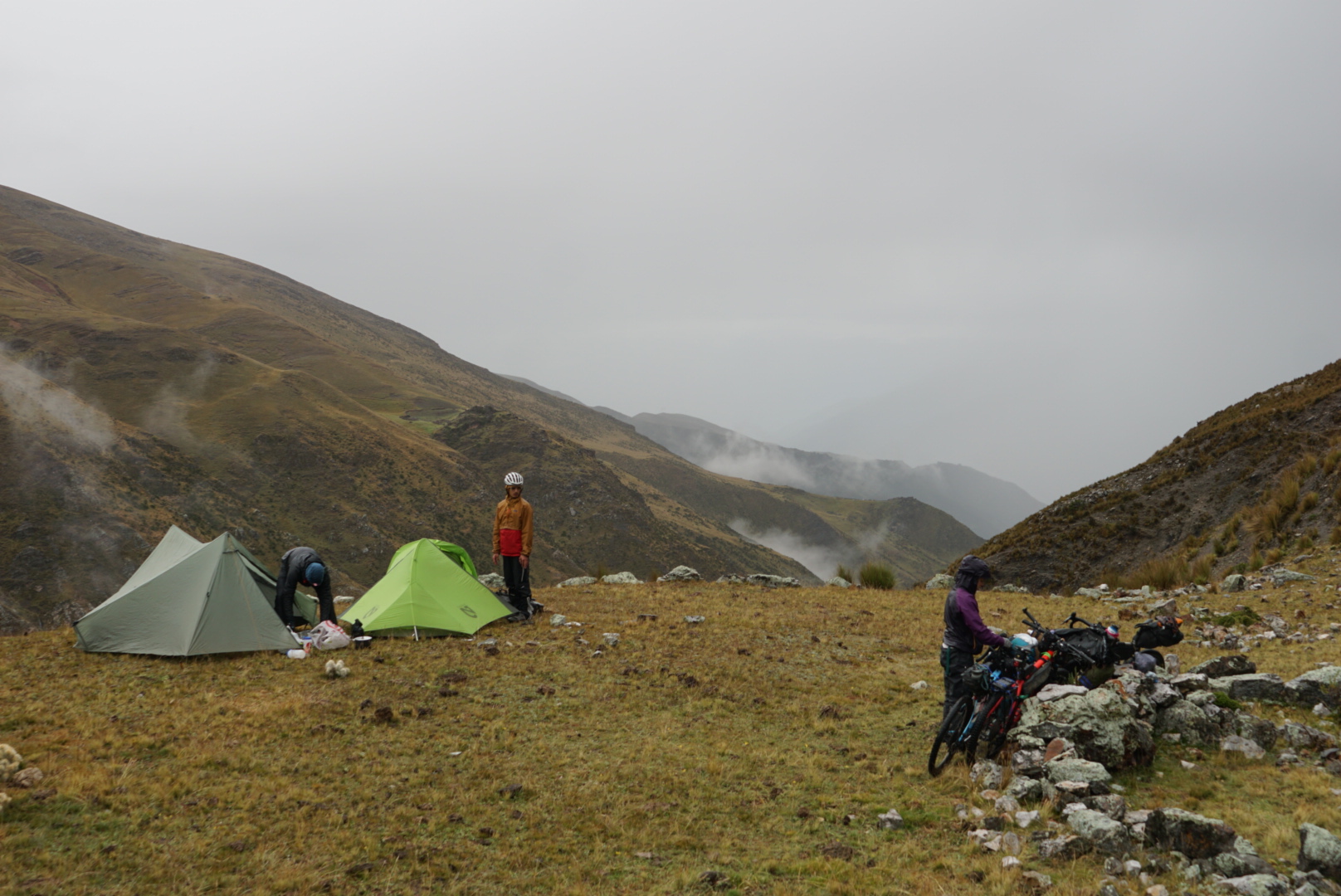 After the bath, we began riding on the 8th day and ultimately made it up to 14k where we camped in the rain. I began feeling sick that evening.
After the bath, we began riding on the 8th day and ultimately made it up to 14k where we camped in the rain. I began feeling sick that evening.
 The next day I continued to feel bad and the weather was not very good. We stopped early at some more in a very small town. There was no official hostel, but a women allowed us to stay in her families unused house. While we were there the local electrician rigged a light bulb for us. I spent most of the evening sleeping.
The next day I continued to feel bad and the weather was not very good. We stopped early at some more in a very small town. There was no official hostel, but a women allowed us to stay in her families unused house. While we were there the local electrician rigged a light bulb for us. I spent most of the evening sleeping.
 The 11th day of riding I was feeling somewhat healthier and we got a full day of pedaling in, mostly rolling along at around 15k. We stopped briefly in a small town called San Fransisco, and a local tried to give Brian a goat.
The 11th day of riding I was feeling somewhat healthier and we got a full day of pedaling in, mostly rolling along at around 15k. We stopped briefly in a small town called San Fransisco, and a local tried to give Brian a goat.
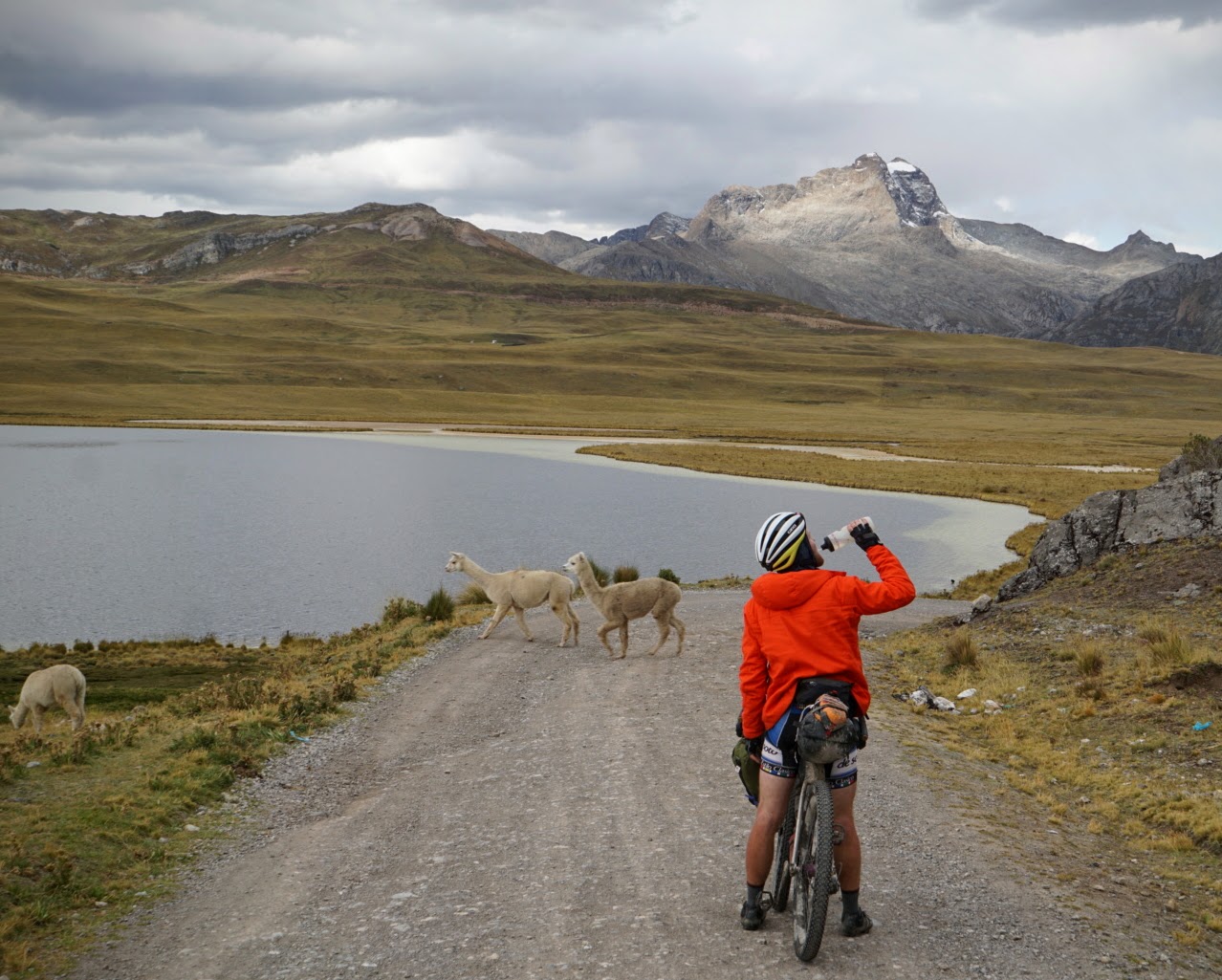 Sam pauses to allow the locals to cross the road.
Sam pauses to allow the locals to cross the road.
In retrospect, for a trip of the duration of Peru Divide I should have organized photos and journal entries more during the trip. I didn’t, so we are going to close this entry out with the second half of the trip largely undocumented.
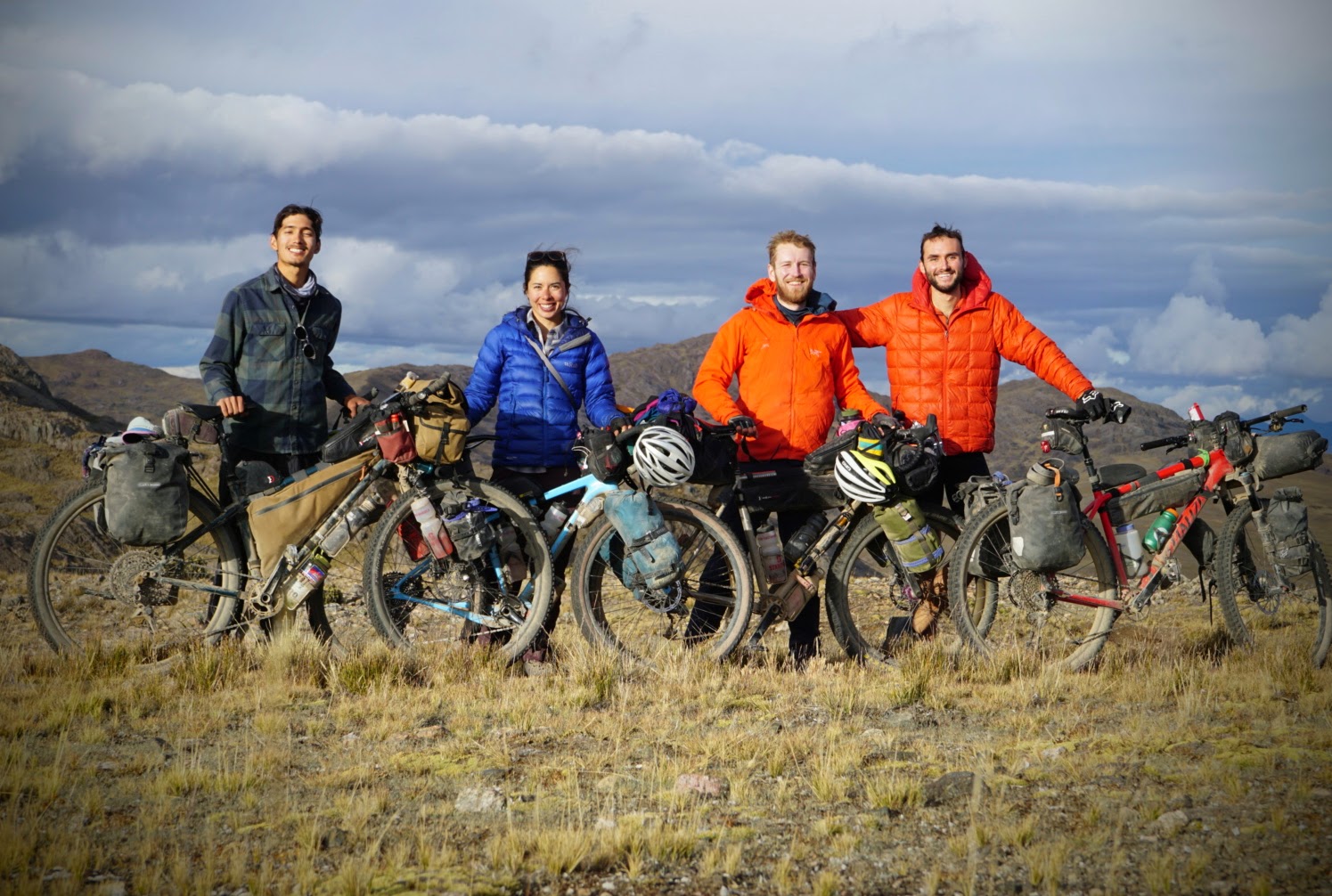
Leave a Comment
Your email address will not be published. Required fields are marked *